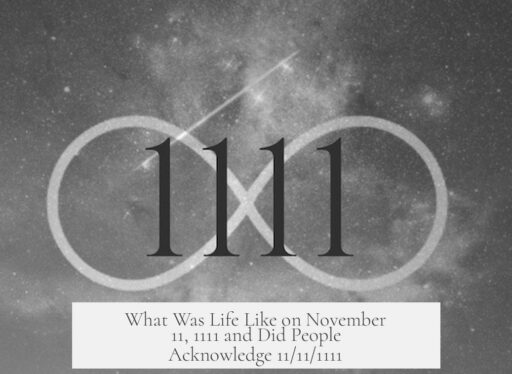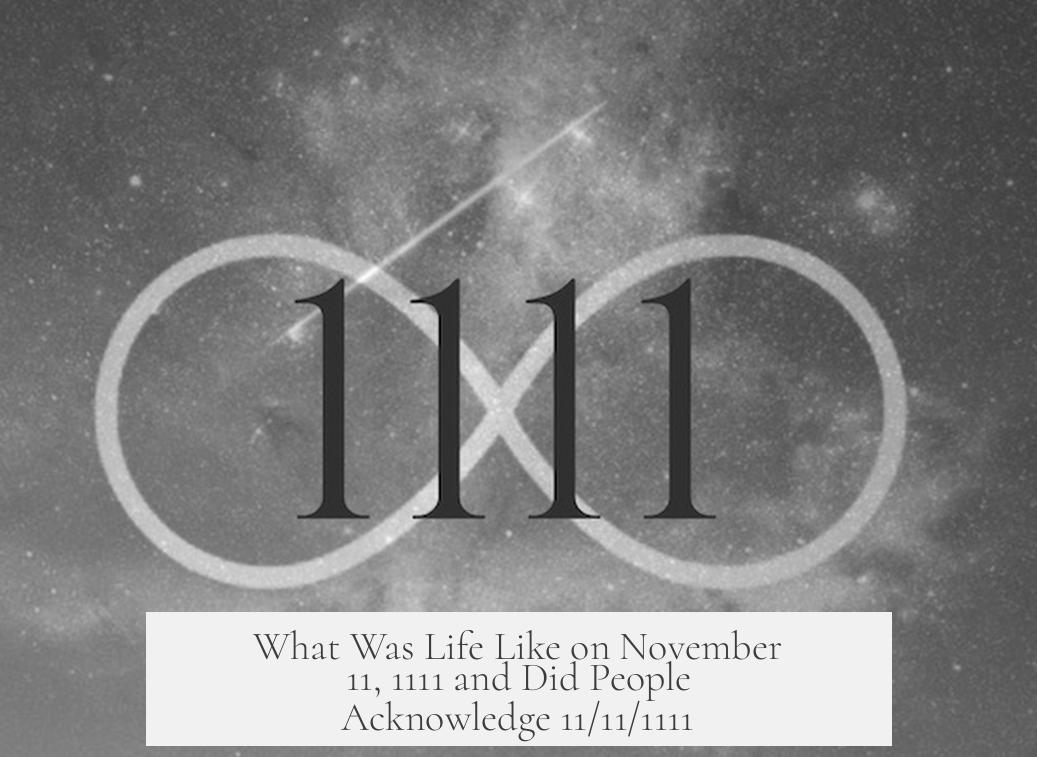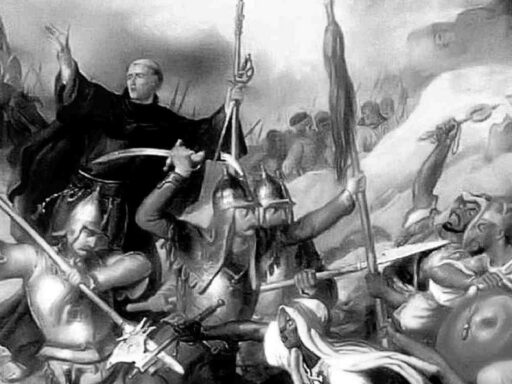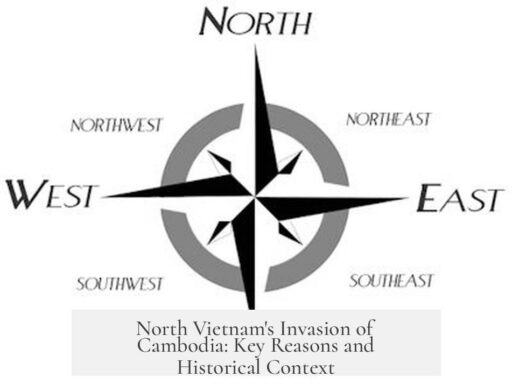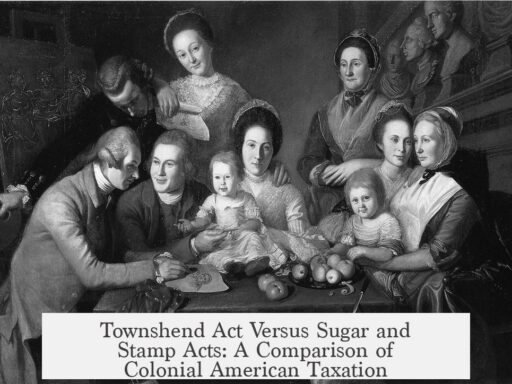The world on November 11th, 1111, was shaped by diverse cultures, political intrigues, and emerging religious traditions. The specific date pattern 11/11/1111 held no significance at the time, as the modern calendar and numeral systems were not in use, and no people globally recognized the repetition.
In 1111, the calendar system familiar today, including the use of Arabic numerals and the Anno Domini (AD) dating method, was not yet standardized or widespread. In Europe, dates were generally referred to by religious landmarks like saints’ days or feasts. They would write the year using Roman numerals—MCXI for 1111—and rarely as simple digits like “1111.” The notion of seeing or valuing the repetitive 11/11/1111 was nonexistent. No culture marked the date for its numeric pattern.
In East Asia, China was under the Song dynasty governed by Emperor Huizong. The year 1111 was recorded as the first year of Zhenghe in the traditional Chinese calendar. The northern region was controlled by the Liao dynasty. Historical records focus on political events and cultural developments rather than the numeric form of the year. The concept of 1111 as a year had no particular meaning.
- Europe was immersed in religious and social developments. Hildegard of Bingen in what is now Germany was close to entering a religious cloister, soon to become a notable mystic and composer.
- Jewish communities in Central Europe grappled with the aftermath of Crusader pogroms, dealing with complex identity and survival challenges.
- In the Iberian Peninsula, Christian forces advanced into Islamic territories like al-Andalus, while Jewish populations experienced relative prosperity due to the Almoravid and Almohad dynasties’ intolerance of non-Islamic groups.
Meanwhile, across the modern United States’ central region, the city of Cahokia thrived greatly. Situated near present-day St. Louis at the confluence of the Mississippi and Missouri rivers, Cahokia grew into a major trade center and cultural hub. This indigenous metropolis did not relate its structures to the Gregorian calendar or to any numeric date pattern.
Along Africa’s eastern coast, the Swahili city-states remained emerging fishing communities. The influence of Islam and expanding intercontinental trade routes began setting the stage for future growth in the region’s economy and culture.
Globally, no historical evidence suggests that anyone recognized or valued the recurrence of the date 11/11/1111. People mostly used localized calendars and referenced events according to religious observances or reigns of rulers. Numbers like eleven or the repetition of digits held no calendrical or superstitious significance recognized broadly.
| Region | State of Affairs around 1111 | Date System in Use |
|---|---|---|
| Europe (Germany, Iberian Peninsula) | Religious growth, Crusader aftermath, political territorial changes by Christians | Roman numerals, religious calendar references |
| East Asia (China) | Song and Liao dynasties politically active; Emperor Huizong ruling | Chinese regnal year system (Zhenghe, Tianqing) |
| North America (Cahokia) | Growing trade hub, rising indigenous civilization | Not calendar-based, indigenous cultural systems |
| Africa (Swahili Coast) | Fishing villages expanding under Islamic influence | Local lunar/solar calendars |
The year numbering familiar today emerged later as the AD system spread through Europe well after the Middle Ages. Thus, the neat numeric sequence of 11/11/1111 that seems notable now was irrelevant and unknown at the time. Calendars were complex and tied to lunar cycles, regnal years, or religious festivals.
In essence, the world on November 11th, 1111, was diverse and vibrant but unaware of any special meaning in repeating digits or modern date notation.
- No one cared about the date 11/11/1111 as we do today; it was simply part of a different calendar system.
- Calendars were based on regnal years, saints’ feasts, or religious observances, not on numeric sequences.
- Global cultures were deeply engaged in political, religious, and social developments unrelated to date patterns.
What Was the World Like on November 11th, 1111? Did Anyone Care That It Was 11/11/1111?
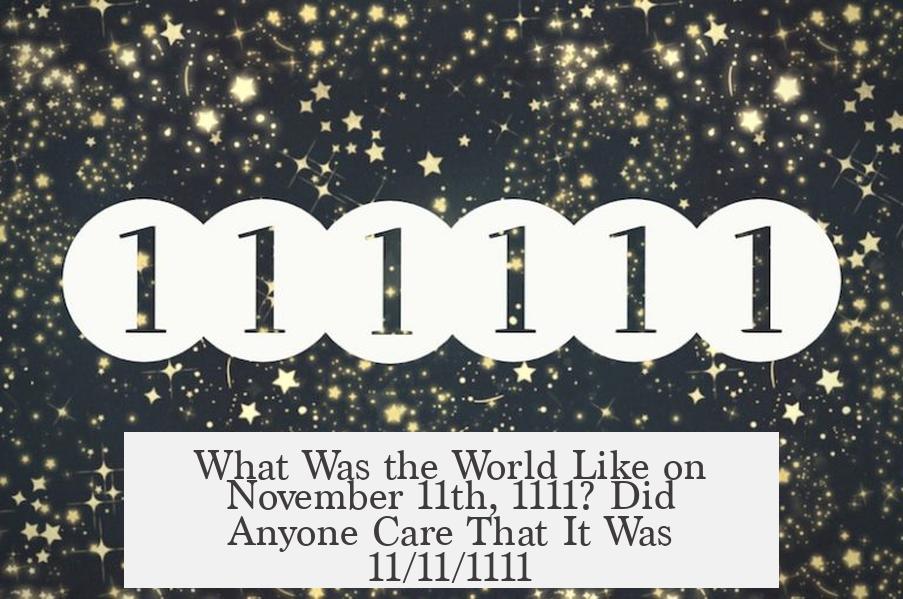
The short answer: No one cared that it was 11/11/1111, because they didn’t even see the date that way. The neat, repetitive pattern 11/11/1111 simply didn’t exist in daily life back then. Calendars, numbering, and even awareness of the year were very different across the globe.
Now, let’s dive into why the date 11/11/1111 wasn’t the cosmic event a modern date fanatic might expect. Prepare for a trip back in time, when people marked days by saints, moons, and feasts, not by strings of ones.
Calendars and Numbering: What’s “1111” Anyway?
In 1111, the idea of numbering years as “1111”—or writing dates like 11/11/1111—was basically science fiction. The Anno Domini (AD) system wasn’t in broad use yet, certainly not as we know it today. When scribes chronicled an event, they used Roman numerals, so the year was MCXI. Even then, dates weren’t recorded by day and month numbers; instead, people often referred to the nearest religious feast or saint’s day. Forget about texting “Happy 11/11/1111!”
In places like East Asia, the year had no connection to “1111” either—it was the first year of the Zhenghe era under the Song dynasty in China, or the Tianqing era in the Liao dynasty ruling parts of northern China. Dates were tied to Chinese dynastic reign periods, not a common calendar.
So when you imagine the world on that precise repetitive date, remember: to most, it was just another day. No special flash mobs or social media trends celebrating the quadruple one’s charm.
Society and Politics Around the Globe in 1111
The world itself was a patchwork of vastly different realities. No unified global consciousness here.
- North America: In the heart of the continent near modern St. Louis, the city of Cahokia was booming. Its population exploded, becoming a vital trade hub at the meeting place of the Mississippi and Missouri Rivers. Imagine a bustling riverside city in the middle of nowhere, thriving without any concept of “1111.”
- Europe (Germany): Hildegard of Bingen was about to enter religious life. She would grow into a cultural giant, shaping monastic traditions by composing hymns and liturgical dramas. Meanwhile, Jewish communities in central Europe grappled with the trauma and aftermath of the Crusades. Some questioned the betrayal inherent in forced baptisms. These were intense human stories—far removed from concerns about calendar date aesthetics.
- Iberian Peninsula: The Christian reconquest was steadily pushing into Al-Andalus. Jewish people in those territories sometimes found improved circumstances, particularly as the Almoravid and Almohad governments, noted for religious intolerance of non-Muslims, showed less tolerance.
- East African Coast: The Swahili city-states were still emerging, mostly fishing villages along the coast. Islam’s spread and intercontinental trade were slowly helping seed future prosperity. No Gregorian calendar parties yet, though.
- China: Under the Song dynasty, Emperor Huizong ruled with artistic flair—famous for painting, calligraphy, and Daoist worship. Politically, this was a fragile moment: alliances formed that would soon lead to the fall of Northern Song and the capture of Huizong himself. The Liao dynasty governed northern areas, soon to face rebellion. None of this drama involved counting the repetitive ones in a date.
Why Didn’t Anyone Care About 11/11/1111?
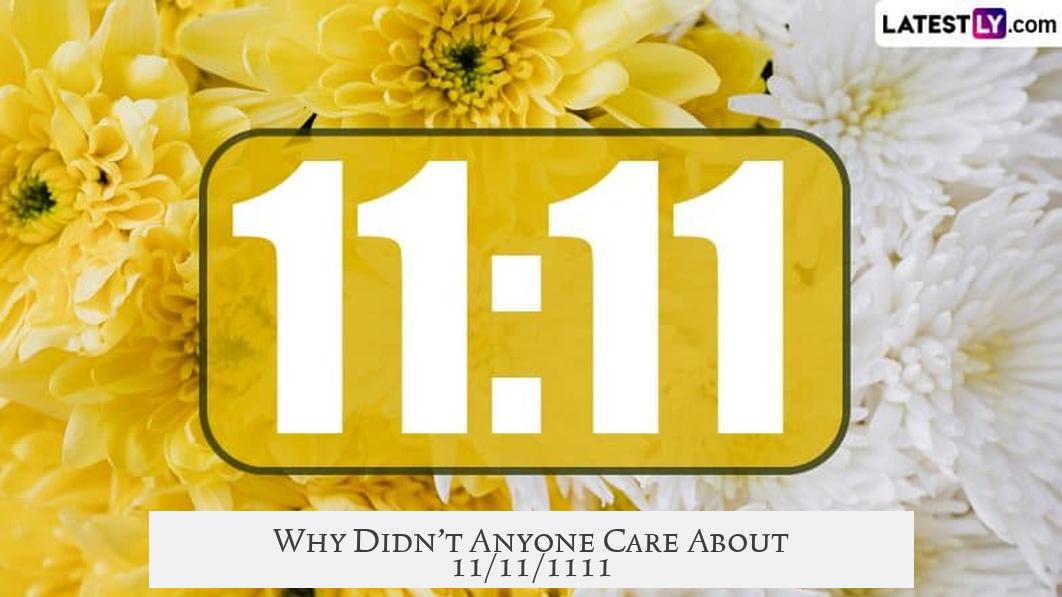
The crucial insight: people simply had no idea the year was “1111”. There was no universal standard measuring time the way we do now. Calendars varied regionally and culturally. In most places, people related to time through religious calendars or the reign of local rulers. The modern numbering system was decades or centuries from universal adoption.
The numeric pattern holding some tickle for us today—a quadruple “11”—meant nothing then. It was neither recorded nor celebrated, because such a numeric sequence only matters when numbers themselves are part of everyday date-telling.
To put it another way: If you handed a medieval monk a modern calendar marking “11/11/1111,” they’d probably look at you like you’re speaking another language. They’d be focused on the feast day or liturgy, not a string of identical digits.
What Can History Teach Us About Dates and Meaning?
This contrast shows how culture, technology, and systems shape our experience of time. We like neat patterns now—”11/11/11″ dates spark everything from pop culture events to fringe numerology.
Historical people didn’t think that way, showing how much our mindset depends on tools like the standardized Gregorian calendar and Arabic numerals. It’s a reminder that the past isn’t just “old version of today” but a place with different perspectives altogether.
Still, if you want to mark 11/11/1111 today, go ahead! Just know you’re embracing a modern meaning that wouldn’t have resonated at the time.
Fun Historical Fact
Imagine a time traveler from 1111 arriving today. Trying to find November 11 on her calendar, then seeing the year stamped as 2024, she’d likely be utterly baffled. Dates, numbers, and “time” itself are human inventions evolving constantly, shaped by our needs and imaginations.
In Conclusion
The world on November 11th, 1111 was vibrant and complex but had no concept of 11/11/1111 as a special date. It was all just another day marked differently depending on where you were. From booming Cahokia across the seas to Germany’s monasteries, and the evolving political chessboard of China, calendars and dates were tools of religion and power—not of numerical amusement.
So next time you see a repetitive date, spare a thought for those who lived centuries ago. They might have utterly missed the chance to appreciate the quirky joy of repeating digits.
